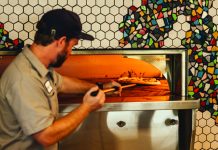This year in an effort to increase my knowledge and understanding about sustainable gardening practices, I sought out and used native plants in my landscaping projects.
What are native plants?
According to the Minnesota Gardening for Beginners website, native plants are:
Plants best adapted to the local climate and once established, seldom need watering, mulching, protection from frost, or continuous mowing.
The definition itself makes native plants appealing. They look great, last longer, and require less maintenance? SUPERB!
Where can I learn more about native plants?
The Minnesota Department of Natural Resources has a pretty nifty set of informative tools to get you started in native plants, whether you’re planting a sunny flowerbed in your front yard or would like to restore your waterfront property to its native beauty.
The University of Minnesota Extension has compiled a list of plants that includes ideal growing conditions and general descriptions of the plants.
Where can I buy native plants?
If you do your homework and know which plants you’d like to plant, you can discover some native varieties at big box stores. There are some very common plants that are natives that you might not even be aware are natives, such as coneflowers, black-eyed Susan, and pussy willow. If you need a bit of help and don’t want to bother with the research, the MN DNR has compiled a list of native plant nurseries and consultants to make our lives easier.
The verdict.
I am pleased at this point that the native plants I planted about two weeks ago are performing MUCH better than the non-native species I planted. They are tolerating the swings in the weather with aplomb. They require less watering. None of them are showing any signs of rust, rot, or any other disease. I’m delighted over the violet blossoms of the spiderwart, and the wild rose is exhibiting delicate pink flowers that are attracting scads of bumble bees.






